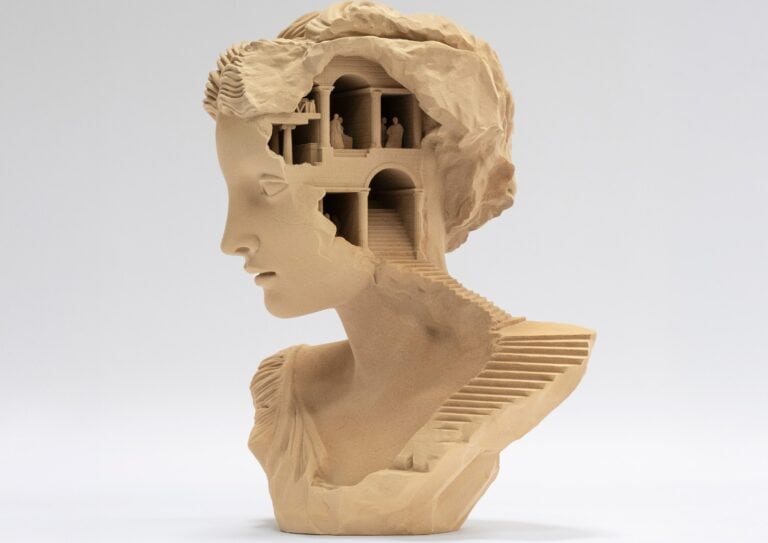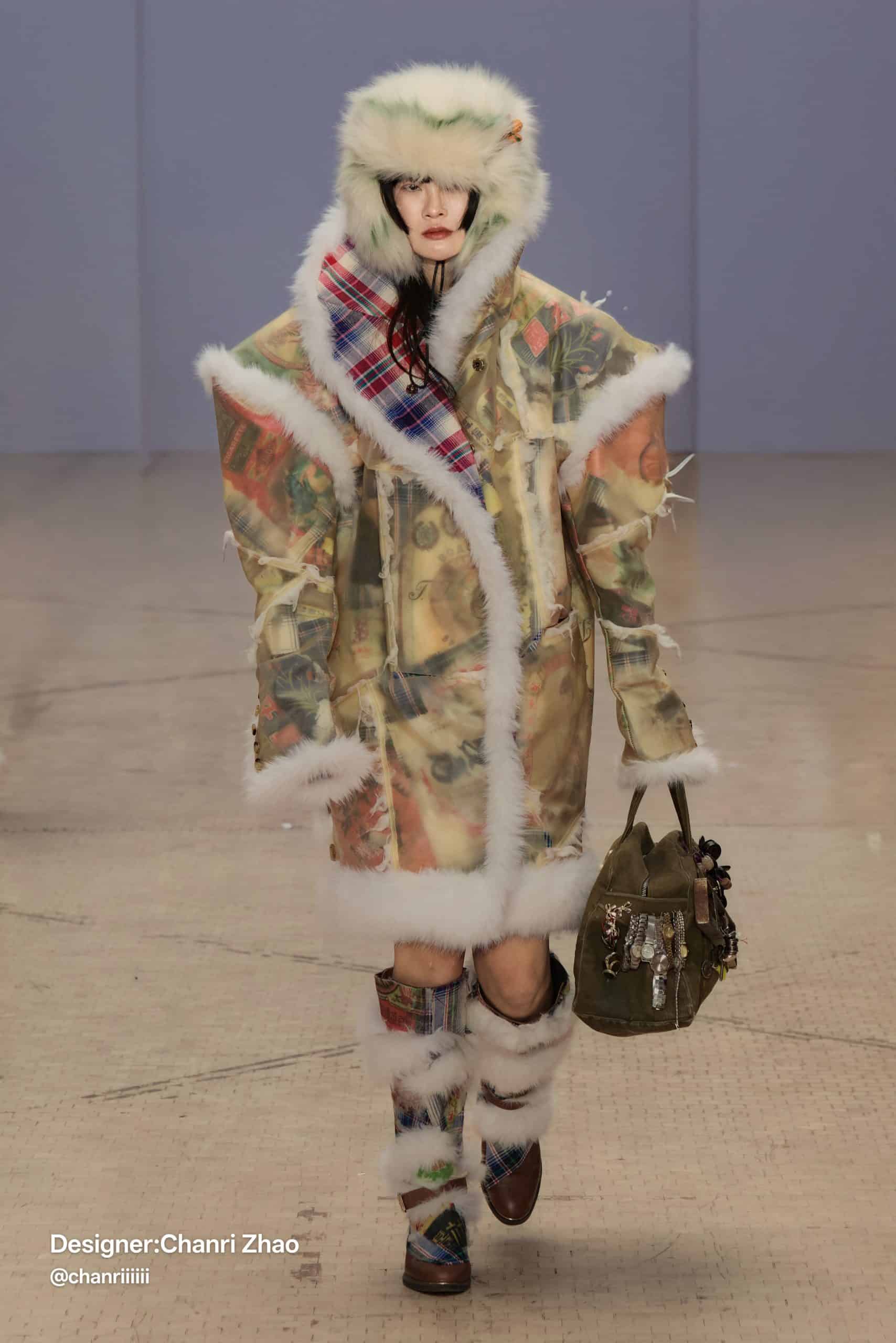
CHANRI ZHAO STITCHES HER TRUTH
Marie Loire Moulin
Chanri Stitches Her Truth from the studio floors of Central Saint Martins to the layered silence of her silhouettes. Her garments don’t simply dress, they speak. Moreover, they reflect a designer who blends softness with strength, mythology with modernity. For example, a snow-covered memory becomes a curved silhouette; a feminist tale finds shape in translucent leather. As a result, Chanri Zhao’s creations don’t follow trends. They carve space for emotion, identity, and self-determined beauty. However quiet they may seem, each stitch carries a voice, hers.
IRK: Welcome to Chanri Stitches Her Truth. For those just discovering you, how would you describe your work as a designer?
Chanri: As a feminist, I appreciate and celebrate the natural beauty and essence of women. I am not ashamed of the secondary sexual characteristics of the female body; instead, I admire the unique strength of women that embodies resilience through softness. Therefore, my fashion style emphasizes the beauty of feminine curves, using a narrative approach to convey the theme of each of my creations. My love for literature inspires me to draw ideas from poetry, myths, and history. For example, in a collaborative project with the Cristobal Balenciaga Museum, I reinterpreted the traditional Chinese tale of Chang’e flying to the moon from a contemporary feminist perspective, reconstructing the image of women from being subservient to their families and husbands to becoming independent individuals with the agency to choose their own paths.
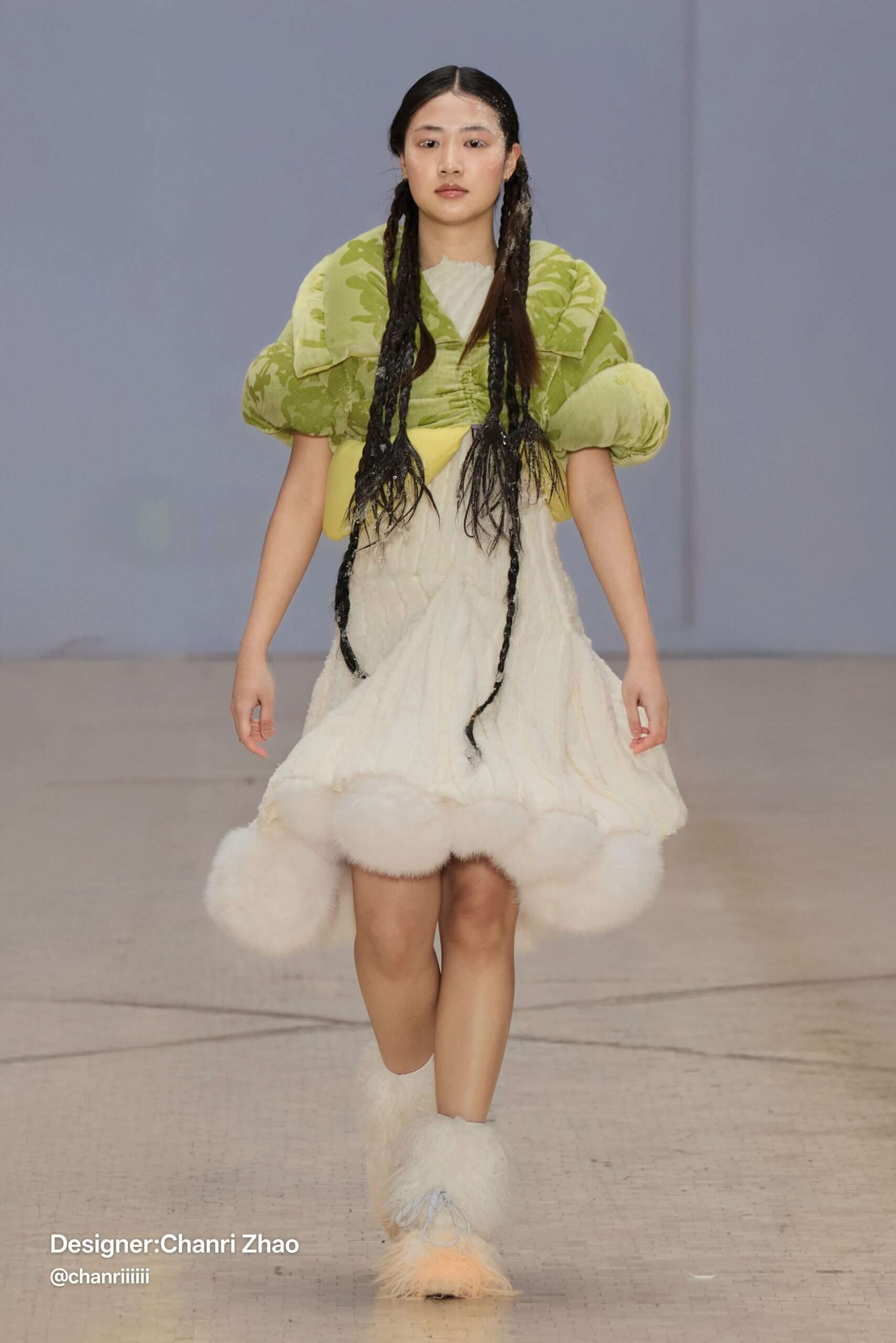
I also enjoy exploring themes rooted in my personal experiences. Currently, my undergraduate graduation project is inspired by my hometown. Harbin is close to Russia and experiences winter temperatures as low as -30°C. Once a hub for Sino-Western railway transportation, Harbin is home to many immigrants and Western-style architecture. It’s fostering a rich regional cultural identity. This project marks the beginning of my journey of self-exploration and the development of my personal fashion style. Through it, I have also challenged myself to work with materials I had never used before. Such as faux fur and leather, including a newly emerging translucent leather material in the fashion industry. I hope to further master this material during my advanced studies and introduce it to a wider audience.
IRK: It seems you often work between body, fabric, and sculpture. What led you to this way of creating fashion pieces and become such a creative designer?
Chanri: Since childhood, I have enjoyed sketching and painting with brushes. During high school, I studied at the Affiliated High School of China Central Academy of Fine Arts. This is where I built a solid foundation in drawing. My background in fine art has given me a deep sensitivity and fascination with color, the human form, and silhouettes. I strive to integrate this foundation into contemporary fashion. I like blending my artistic insights with modern aesthetics in my own unique way as a designer.
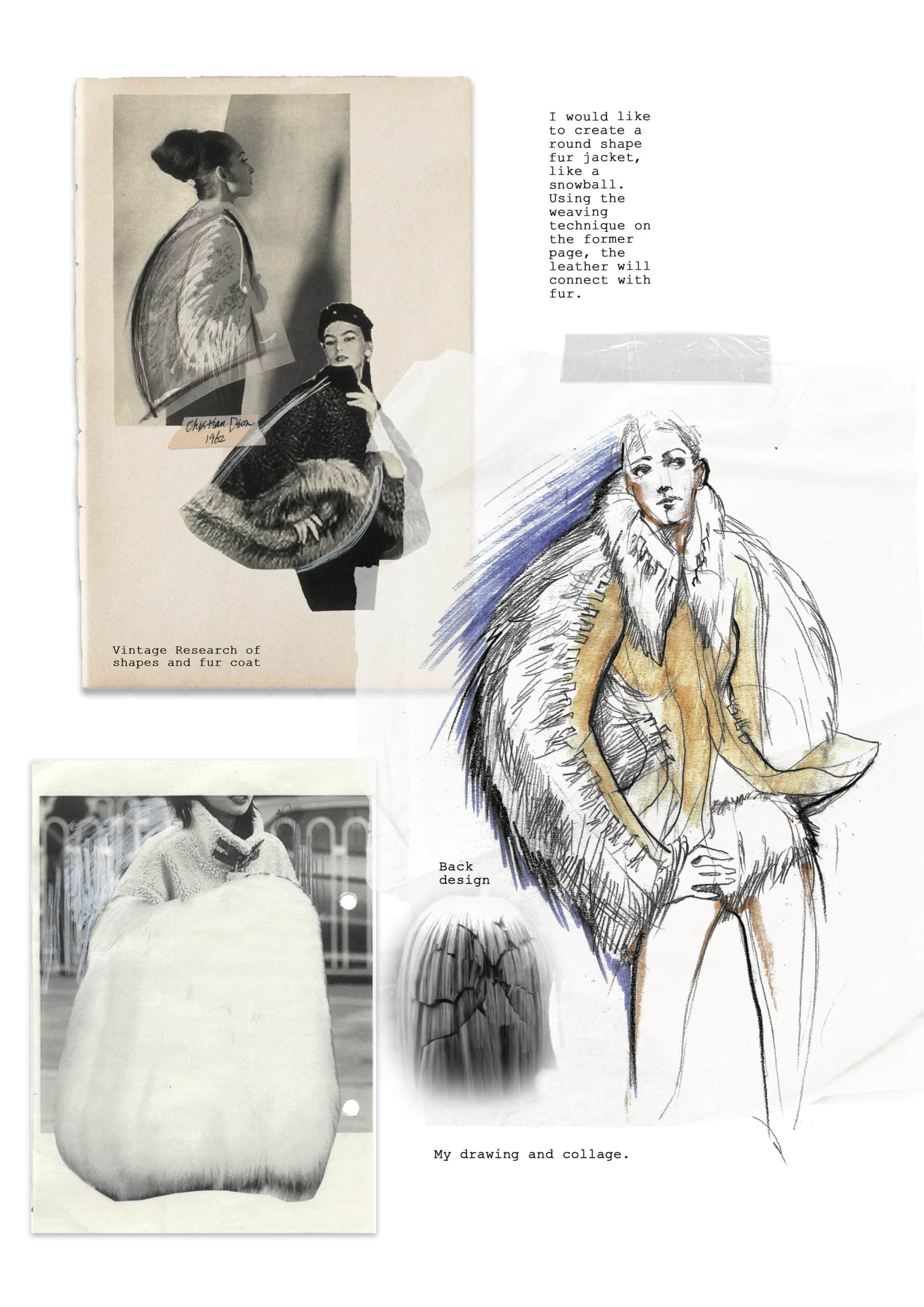
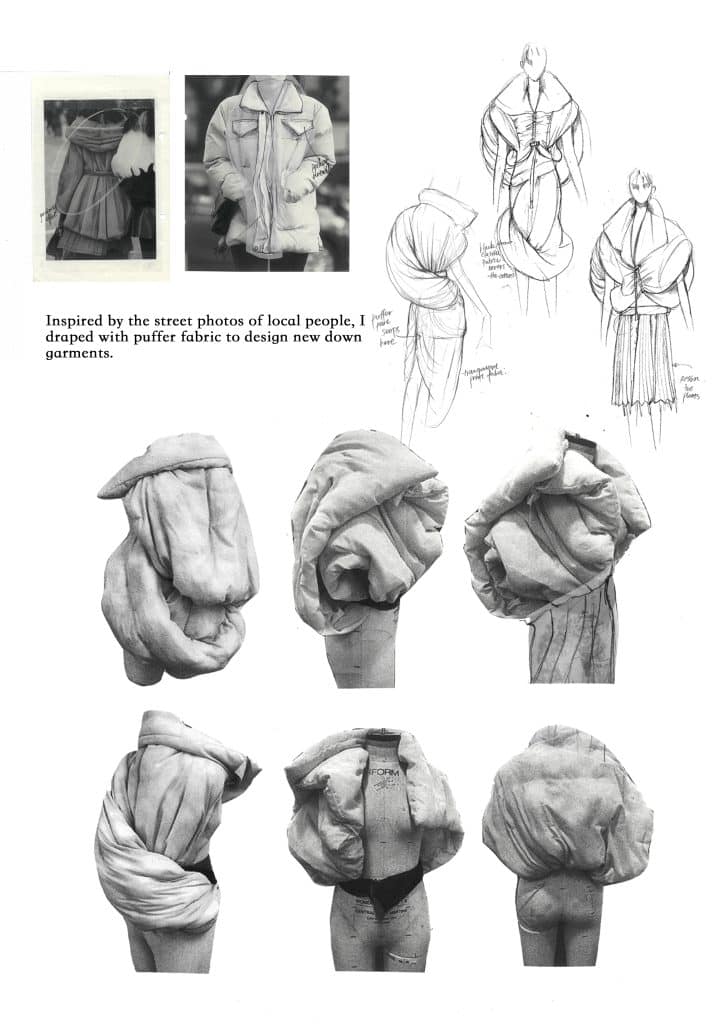

Design development by Chanri Zhao. Courtesy of Chanri Zhao
IRK: Your silhouettes feel soft but structured. Where are your references and inspirations from?
Chanri: When it comes to silhouette design, I usually develop my ideas around the imagery and emotions of the theme. For example, in my graduation project, I incorporated many rounded silhouettes. They were inspired by memories of my hometown’s snow and ice culture, such as snowballs and ice sculptures. Another approach I use is conducting fashion research related to the theme. First, this includes studying historical and contemporary clothing from my hometown. Then, reinterpreting those elements into modern designs that clearly and meaningfully convey the story behind the collection.
IRK: How do you choose your materials? Is it about texture, symbolism, or the way they Interact with the body?
Chanri: I am a highly intuitive and emotionally driven designer. The choice of material is essential to my design language. I aim to use materials in the most direct and expressive way to tell the story behind my work. For example, I used laser-engraved fleecing fabric to mimic the look of footprints in snow. This kind of straightforward expression allows viewers to clearly understand the sense of romance I want to convey. I also enjoy experimenting with unconventional or rarely used materials. In my graduation project, I worked with specially treated transparent sheepskin. This material created an effect where the body appears reflected beneath an icy surface, subtly showing the skin’s color. The leather’s structured yet flexible texture also added a sense of strength and presence to the garments.
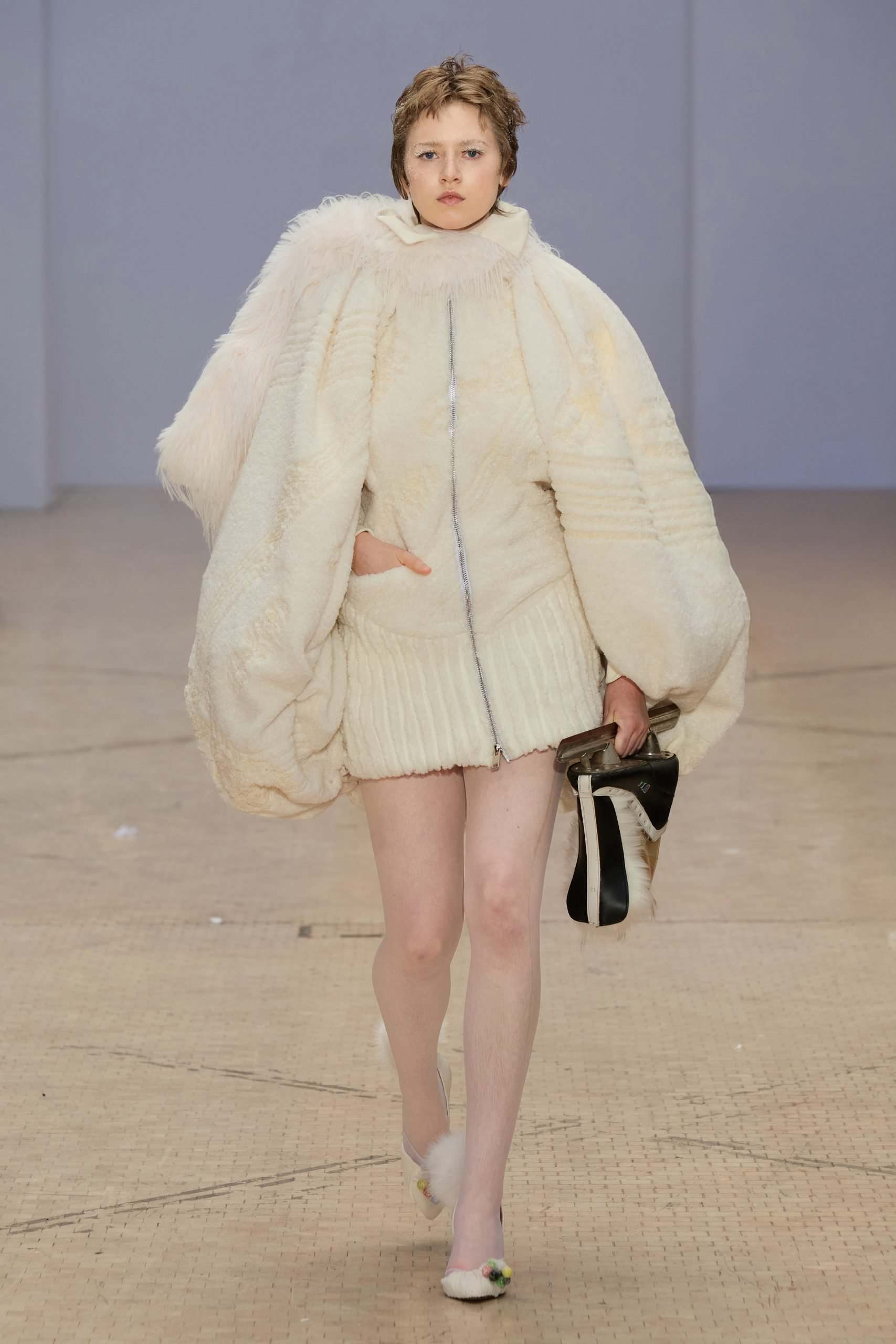
IRK: What part of the process challenges you most? The concept, the making, or the sharing?
Chanri: At this stage, the most challenging part for me is the final styling and integration. I wasn’t able to find a collaborator for the accessories. Creating the most striking overall look in a short amount of time requires a great deal of experience. In the last week before the show, I need to complete the bags, shoes, and headpieces on my own. It has become a significant challenge for me.
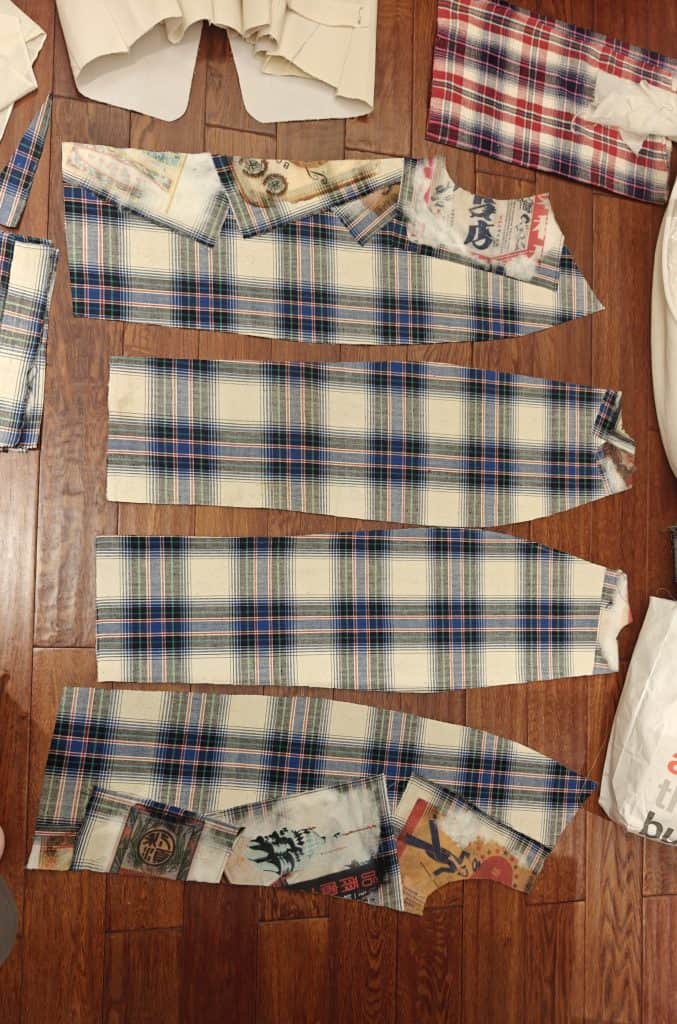
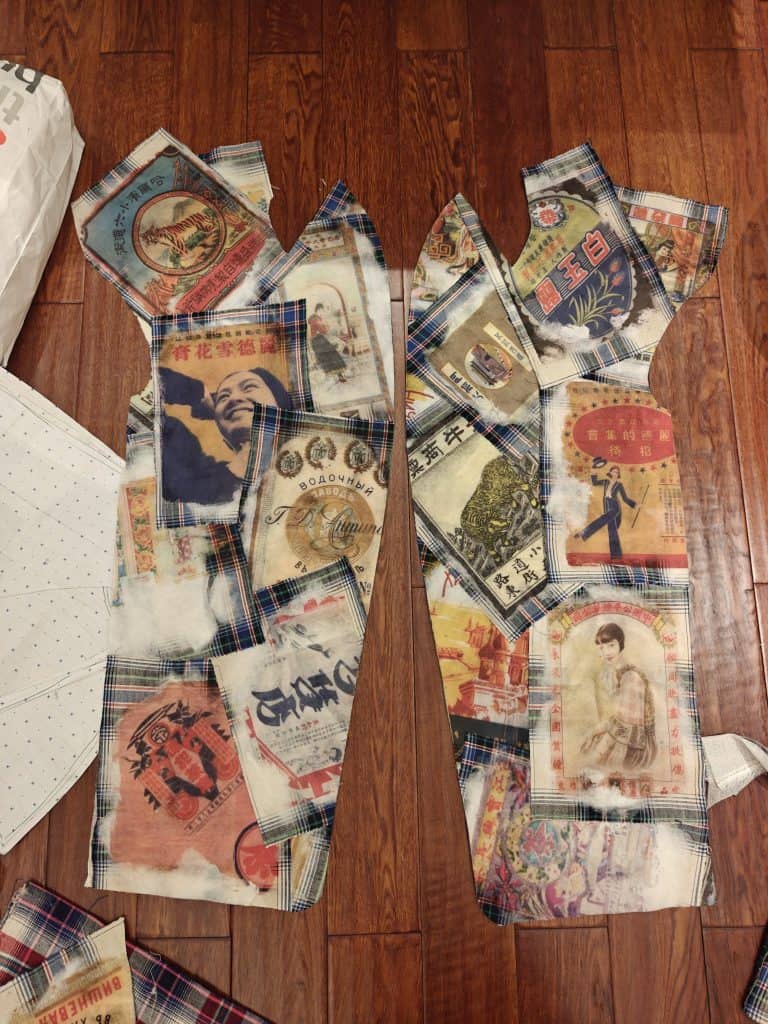
Archival imagery, political nostalgia, and heritage patterns come together in Chanri Zhao’s fabric preparation process. Each cut balances story and structure. Courtesy of designer Chanri Zhao.
IRK: As a designer, have you faced moments where your vision didn’t align with industry norms, and how did you navigate that?
Chanri: I believe this is closely tied to my personal taste. Before I became an adult, I was far from fashionable or glamorous. I knew nothing about fashion, nor did I imagine myself ever being drawn to the world shaped by contemporary brands. To me, clothing has always been just another medium, like paper and paint. I don’t enjoy following the latest trending silhouettes or colors. While going with the flow might bring visibility and make things easier, it strays from my original intention. My aesthetic might seem unconventional or even odd at times—and that’s both my weakness and my strength. For now, I think all I need to do is accept it, and trust in myself.

IRK: What’s been the most difficult part of shaping your creative path as a designer so far?
Chanri: I believe the biggest shift came from the change in cultural perspective after moving abroad. It inevitably influenced how I view both my academic journey and my future. When I arrived in the UK, I was struck by how different the cultural environment was from my own background. The mainstream here embraces bold, expressive styles and a kind of surreal admiration for genius. Learning to understand and absorb these ideas while staying grounded in my own values. It was a challenge that once made my creative path feel uncertain. But now, I have a much clearer understanding of what I want to create and express as a designer.
IRK: What do you hope people feel when they see or wear your work?
Chanri: Most of my designs are created for women, and I approach fashion from the perspective of an East Asian woman. I want the women who wear my clothes to feel confident in the beauty they project. To find a sense of self-satisfaction in the image the garment helps them embody. I hope men see women in my designs with respect, not objectification, and even a sense of admiration.
IRK: Is there something that keeps resurfacing in your work, even if you’re not always aware of it?
Chanri: I see myself as a soul stubbornly yearning to be heard. Each garment I create, has a silent scream woven within, quiet enough not to be noticed at first glance. For those willing to look deeper, they may uncover the layers of symbolism, meaning I’ve carefully embedded in the details.
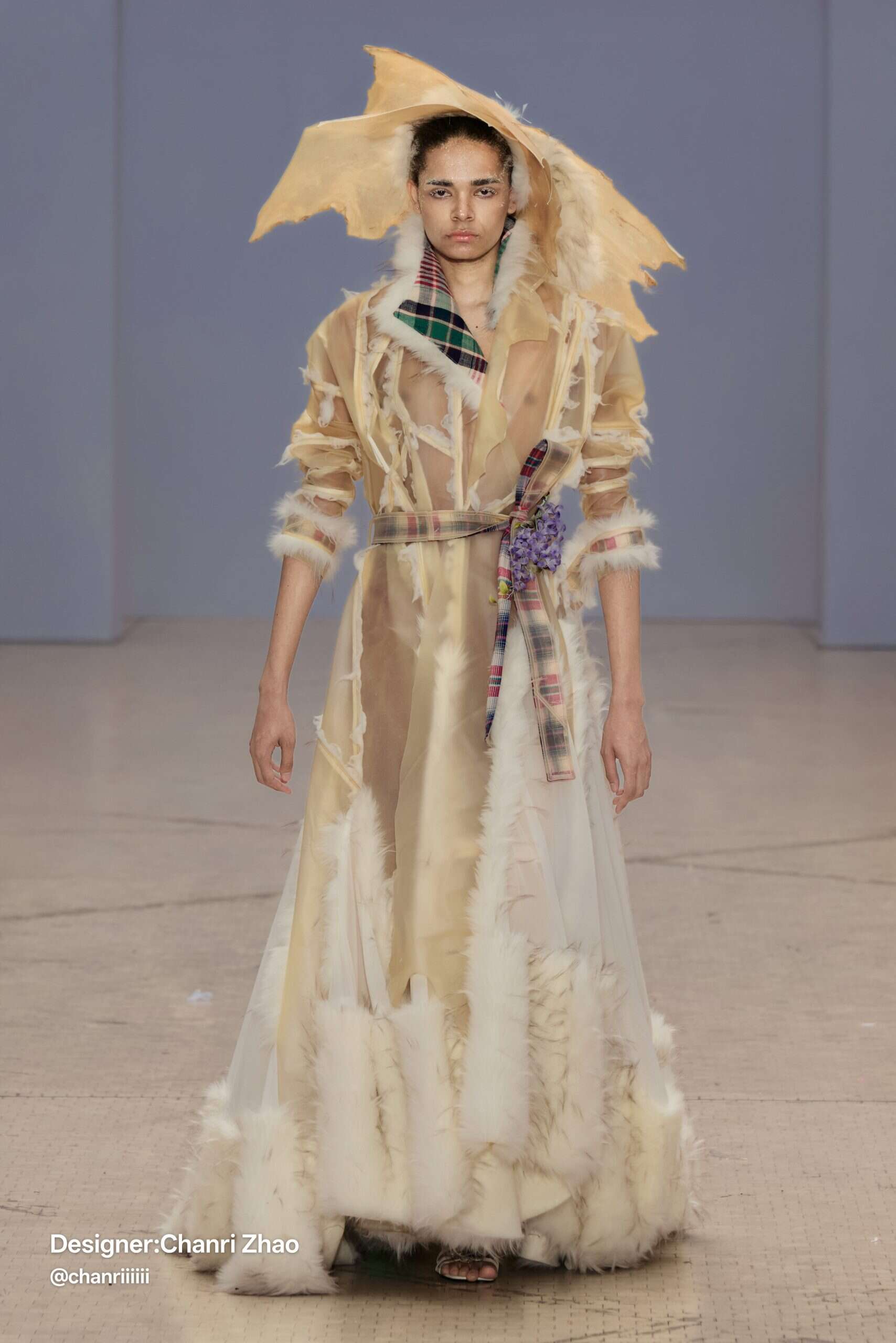
IRK: What role does technology play in your creative process? Is it a tool, a collaborator, or something you resist?
Chanri: I understand that for some designers, intricate and unique craftsmanship lies at the very core of their work. But for me, technique is more of a tool, something that serves the concept. I believe different techniques can help express different narrative themes. I build on solid construction, then use decorative elements to add distinctive details that help bring each garment’s story alive.
IRK: What’s next for you? Any new projects or shifts you’re exploring creatively?
Chanri: I remain open to all future possibilities, whether pursuing a graduate degree or beginning my career in the professional world. This summer, I’m planning a small project titled “Making Clothes for the Fabric.” Over the past few years, I’ve collected beautiful textiles and now plan to create wearable, commercially viable pieces from them. These designs, made for myself and my family, will help refine and strengthen my foundational skills through hands-on practice.
IRK: To conclude Chanri Stitches Her Truth, if someone resonates with your universe, where should they go to explore more, or support what you do?
Chanri: I believe those who resonate with my work share a romantic spirit and a keen attention to detail. They can follow my social media accounts or reach out to me directly for potential collaborations. I will also design ready-to-wear pieces available for custom orders, they can continue to stay updated and engaged.
In the end, Chanri Stitches Her Truth is more than a title, it’s a mission. As a designer, Chanri Zhao crafts garments that speak in silence, blending memory, material, and meaning. Her work resists noise and novelty, choosing instead to express a steady, intentional voice. And in doing so, she reminds us that fashion can still be personal, and powerful. This is how Chanri Stitches Her Truth.
Did you enjoy Chanri Stitches Her Truth? Discover another powerful and creative designer in C’est Jeanne Bespoke Glovemaking.
Share this post
Marie Loire Moulin approaches fashion as an immersive language—one that expresses identity, character, and cultural influence. Echoing Jean Cocteau’s observation that “Fashion is what goes out of fashion,” Moulin embraces the paradox at the heart of her craft. For her, fashion is a living, breathing art form—constantly deconstructed, reimagined, and reshaped in response to the world around it.
What fuels Marie Loire’s creativity is the ability to blend worlds—to explore the intersections of fashion, technology, history, and art. She is inspired by how these disciplines collide to generate experiences that are not only visually compelling, but also deeply purposeful.
Moulin is particularly drawn to artistic expressions that serve as bridges—linking cultures, fusing tradition with innovation. Sustainability, for her, is not a buzzword but a foundation. She sees it as a long-term commitment to thoughtful creation, not a passing aesthetic.
As a stylist working with actors on film sets, Marie Loire thrives on transforming a director’s vision into living, breathing characters. Through wardrobe and silhouette, she builds atmospheres that tell stories—stories of emotion, intention, and presence.
Her creative drive extends into virtual reality and immersive art, where she explores how emerging technologies can shift perception and spark connection across cultural boundaries. For Moulin, the digital realm is just another canvas—one that, when used with care, has the potential to resonate as powerfully as the physical world.
Whether on set or in virtual space, Marie Loire seeks originality and depth. Her work is marked by richly layered references, a reverence for detail, and a belief that fashion—at its best—can speak not just to the eye, but to the mind.
Read Next


